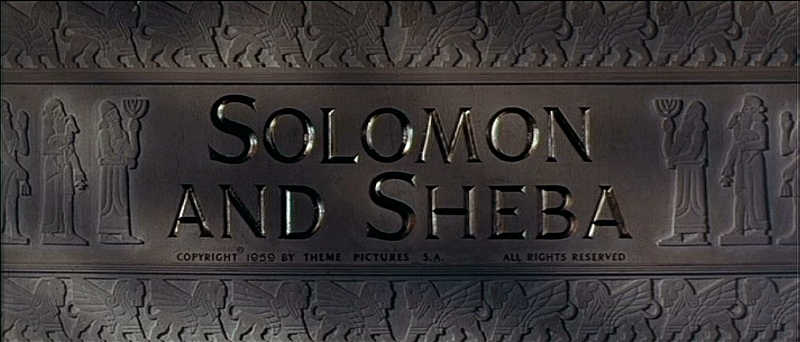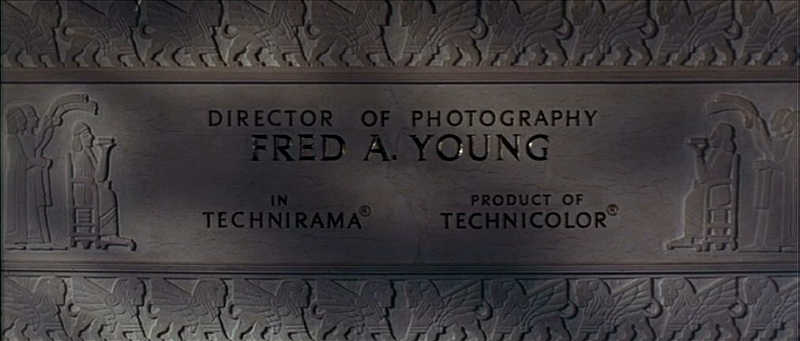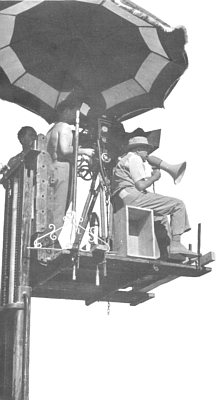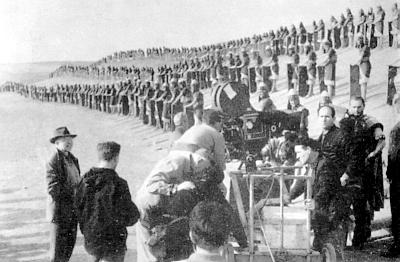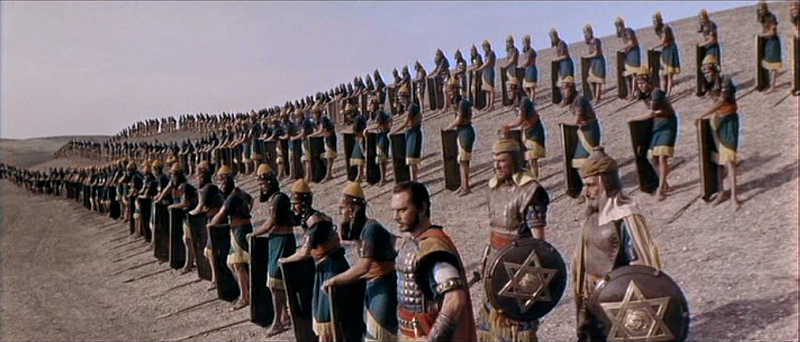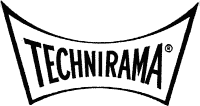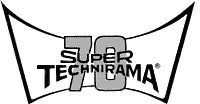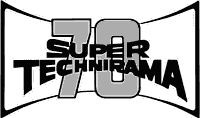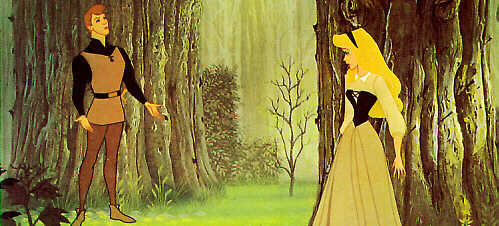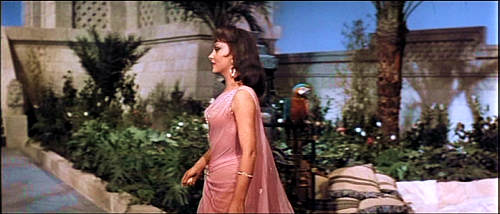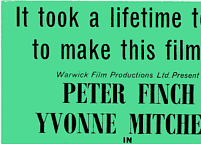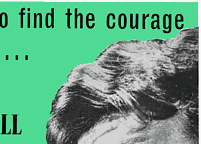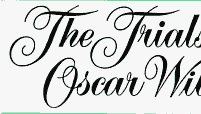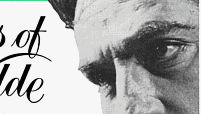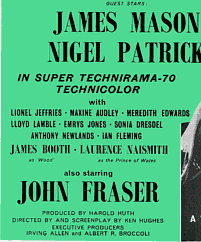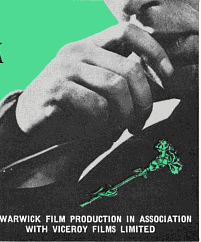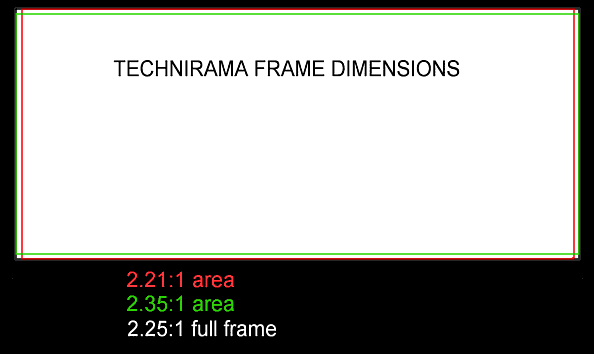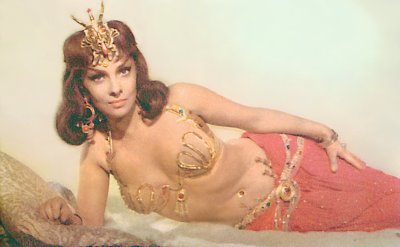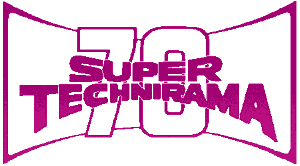
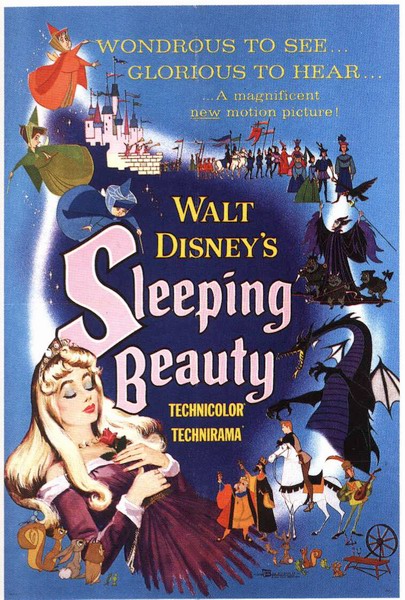
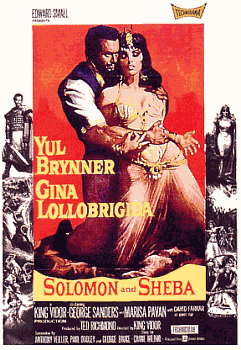
In 1959, Walt Disney used Technirama
in the production of his animated feature Sleeping Beauty.
Disney wanted to participate in the 70mm roadshow presentation format used
on a number of contemporary films. Using optics developed by Panavision,
Inc., Technirama's 35mm horizontal negative was printed in Todd-AO compatible
70mm with six track magnetic stereophonic sound. Over the next few years,
a great many Technirama films were released in 70mm under the trade name
SUPER TECHNIRAMA 70. 1959 also saw the 70mm release of Solomon
and Sheba, memorable only for the death of Tyrone Power, the scant costumes of its coproducer and star, Gina Lollobrigida, and Freddie Young's photography. Two out of three isn't bad.
From the Solomon and Sheba roadshow souvenir program book:
Something about
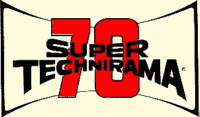
|
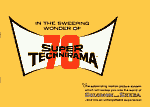 New! Technirama Promotional Booklet CLICK ON THE BOOKLET COVER |
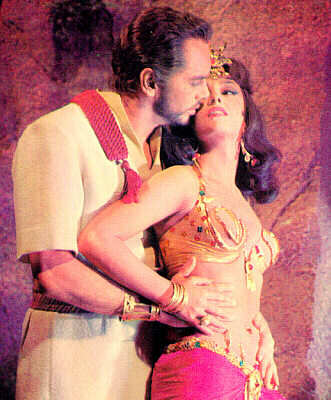
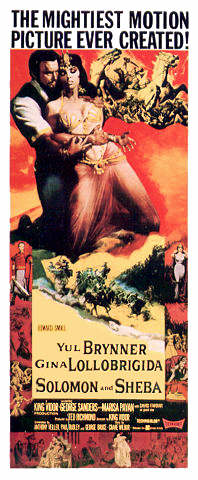
A publicity still of Yul Brynner and Gina Lollobrigida from Solomon and Sheba (above left) (1959). The film's two best features are illustrated, Brynner's excellent wig and Miss Lollobrigida's obvious assets. Above right, a poster attempts to sell the film on sex. Might as well, since none of the other aspects was particularly remarkable.
Solomon and Sheba benefits from the typical quality camera work of Freddie Young, ASC, BSC. Exactly why Young's association with the two venerated cinematographic societies is ignored in the screen credit is anyone's guess. Technirama's credit as a product of Technicolor was used in several European produced films during 1956-1959.
Above: Photos of King Vidor shooting Solomon and Sheba in Spain. Vidor had a long string of excellent films dating back into the early silent era, but this one wasn't up to par.Pick A Logo
United Artists provided two different process logos for exhibitors to use in their ads for Solomon and Sheba. If the theatre was running the film in 35mm then the logo on the left was used in newspaper ads. If the theatre was running it in 70mm then the logo in the center was used in the ads. The logo at right was used by the studio in various campaign materials, the souvenir book, and the dreadful soundtrack album.
Film frames from the first two Super Technirama 70 films Disney's Sleeping Beauty Solomon and Sheba
The Trials of Oscar Wilde, a British Technirama production, was an early 70mm attraction, and far less panoramic than most. Note that the cast includes an actor named Ian Fleming and one of the film's executive producers was Albert R. Broccoli. Aha! The James Bond movies are soon to be born.
Technirama® vs Super Technirama® 70 Image Sizes
There is often some misunderstanding about how much image is lost in one dimension or other when Technirama negatives make 70mm versus 35mm prints. The 35mm screen ratio was 2.35:1, as per CinemaScope, and the 70mm ratio was 2.21:1, as per Todd-AO. This is not a very great difference. Since the camera negative in the Technirama system created an image with a ratio of 2.25:1, both formats could be extracted with virtually no image loss, as clearly indicated in the sketch above. The extraction areas are so similar that it would not be necessary to use separate camera finder markings in order to protect action within the frame, though the finders actually did have such markings. Please note that the indicated areas are not the exact extraction areas used by Technicolor, they are simply an illustration of how little the difference is between the available extraction areas.
You are on Page 3 of







